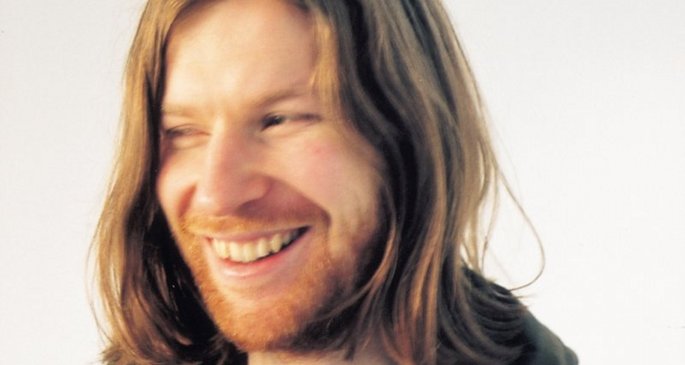Last night, London’s Barbican played host to one of the year’s most anticipated live shows, with the beyond revered Aphex Twin bringing his Remote Orchestra to the capital.
In truth, the Remote Orchestra – an idea originally developed last year for the European Culture Congress in Poland, which took up the first 45 minutes of the performance – was the least enjoyable part of the night. Simply put, the Heritage Orchestra were split into four sections, lit by different coloured lights, accompanied by a 12-person choir lit in light blue. Aphex dictated the notes each section were playing, and the volume at which they were playing them, through a desk at the back of the room – this was then broadcast on the big screen, by means of a blocky, Teletext-esque graphic that, from a punter’s point of view, was actually more distracting than anything else. Most importantly, the music just wasn’t that interesting: held chords and droning strings for 45 minutes, creating an ominous mood but not really doing much other than getting louder and quieter. It’s worth reading the blurb below this video, via the Barbican’s soundman, which gives you a more detailed idea of Aphex’s role in the performance, but from an audience’s perspective I don’t know how much of it translated.
After a short interval, the second half of the show was dedicated to Aphex’s ‘Interactive Tuned Feedback Pendulum Array’, a piece which aimed to “expand” on Steve Reich’s Pendulum Music. This opened, in fact, with the best part of the entire show, a piano suspended from the Barbican’s ceiling, swinging back and forth and becoming the pendulum itself – its amplified creaks, as it swung, becoming part of the music, in time with the piano’s notes. It was very simple, but brilliant.
The longer part of the Pendulum section of the show featured a succession of mic’ed-up disco balls, swinging back and forth like pendulums, with Aphex taking the sounds and gradually manipulating them into 35-40 minutes of scraping ambient music that slowly became quite bassy. Visually, this didn’t have the romantic simplicity of the suspended piano, but it was bloody impressive, with well over 100 lasers projected from the disco balls, transforming the Barbican into something more akin to the London Planetarium. Musically, it was more enjoyable than the first half, but again it’s hard to shake the feeling that both concepts could have been taken much further – bar the moment in the show’s first half where every volume slider was pushed to the max, there was no real climax to either performance, nothing to really take your breath away; to make you feel exhilarated – or even merely excited – rather than simply interested.
Either way, as is inevitably the case in 2012 (and despite the no phones sign in the venue!), there are already a stack of videos on YouTube, Here are some that might give you an idea of how the show looked and sounded:






























